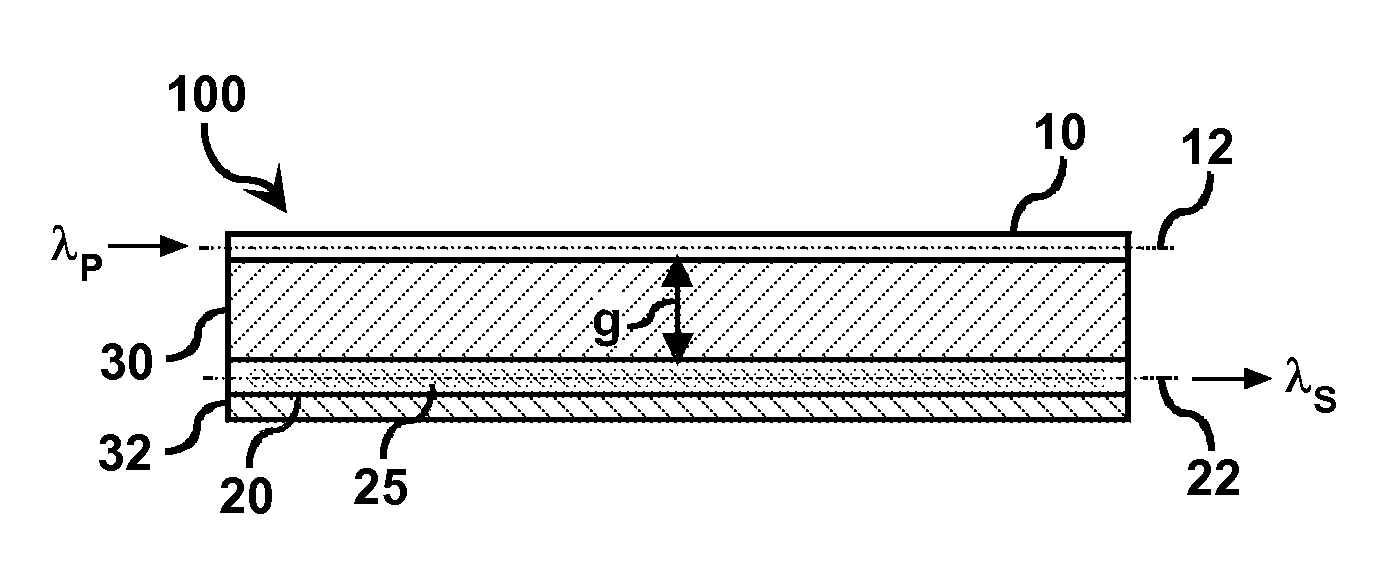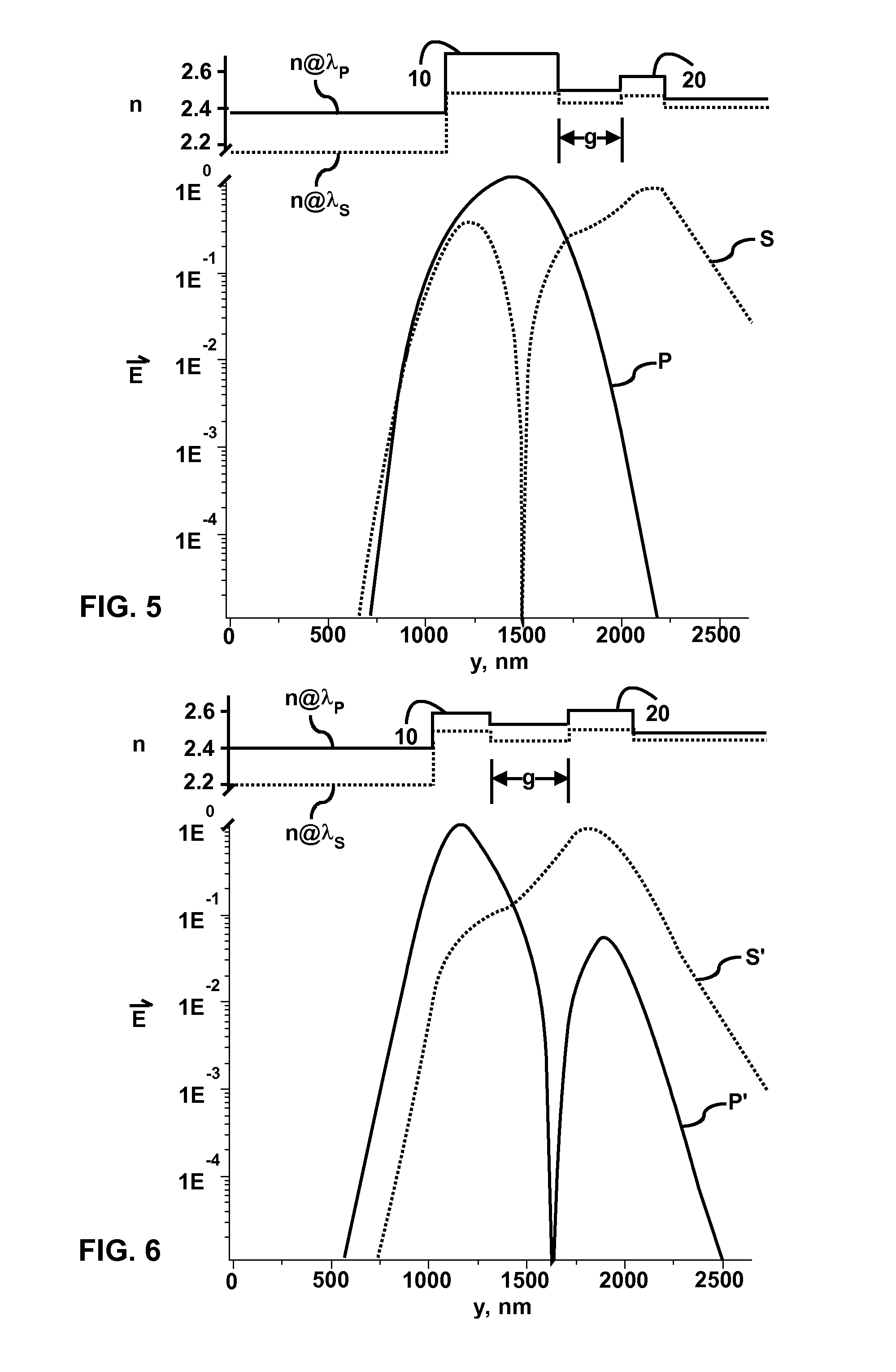Optically Pumped Laser
a laser and optical pump technology, applied in the field of lasers, can solve the problems of inefficient lasers, high pump power, and difficult utilization, and achieve the effect of high pump power
- Summary
- Abstract
- Description
- Claims
- Application Information
AI Technical Summary
Benefits of technology
Problems solved by technology
Method used
Image
Examples
Embodiment Construction
[0008]Referring initially to FIG. 1, a laser 100 is provided comprising a pump waveguide core 10, a signal waveguide core 20, an active gain region 25, and associated waveguide cladding material 30, 32. FIG. 1 illustrates the laser 100 along the longitudinal dimension of the device, while FIGS. 2-4, described in further detail below, are taken along a cross section of the device perpendicular to a longitudinal dimension of the device. As is clearly illustrated in FIG. 1, the pump waveguide core 10 is oriented along a longitudinal optical pumping axis 12 and is at least partially surrounded by cladding material characterized by an index of refraction that is lower than that of the pump waveguide core 10 at a given pump wavelength λP. Similarly, the signal waveguide core 20 is oriented along a longitudinal optical signal axis 22 and is also at least partially surrounded by cladding material. The signal waveguide cladding comprises material that is characterized by an index of refracti...
PUM
 Login to View More
Login to View More Abstract
Description
Claims
Application Information
 Login to View More
Login to View More - R&D
- Intellectual Property
- Life Sciences
- Materials
- Tech Scout
- Unparalleled Data Quality
- Higher Quality Content
- 60% Fewer Hallucinations
Browse by: Latest US Patents, China's latest patents, Technical Efficacy Thesaurus, Application Domain, Technology Topic, Popular Technical Reports.
© 2025 PatSnap. All rights reserved.Legal|Privacy policy|Modern Slavery Act Transparency Statement|Sitemap|About US| Contact US: help@patsnap.com



